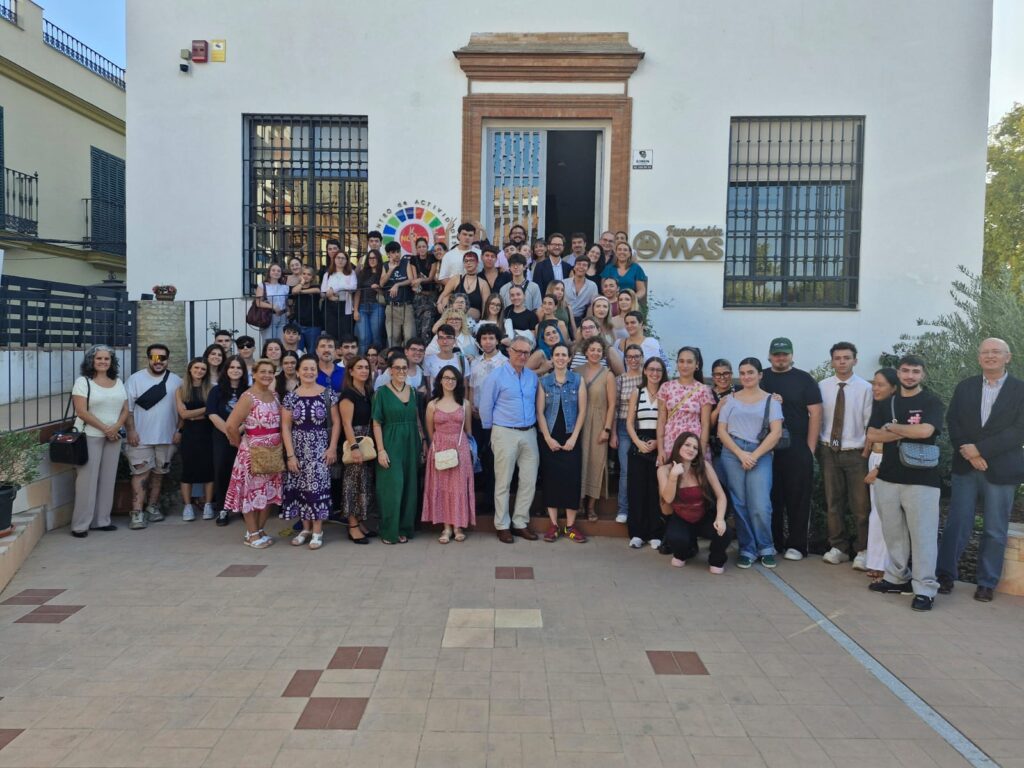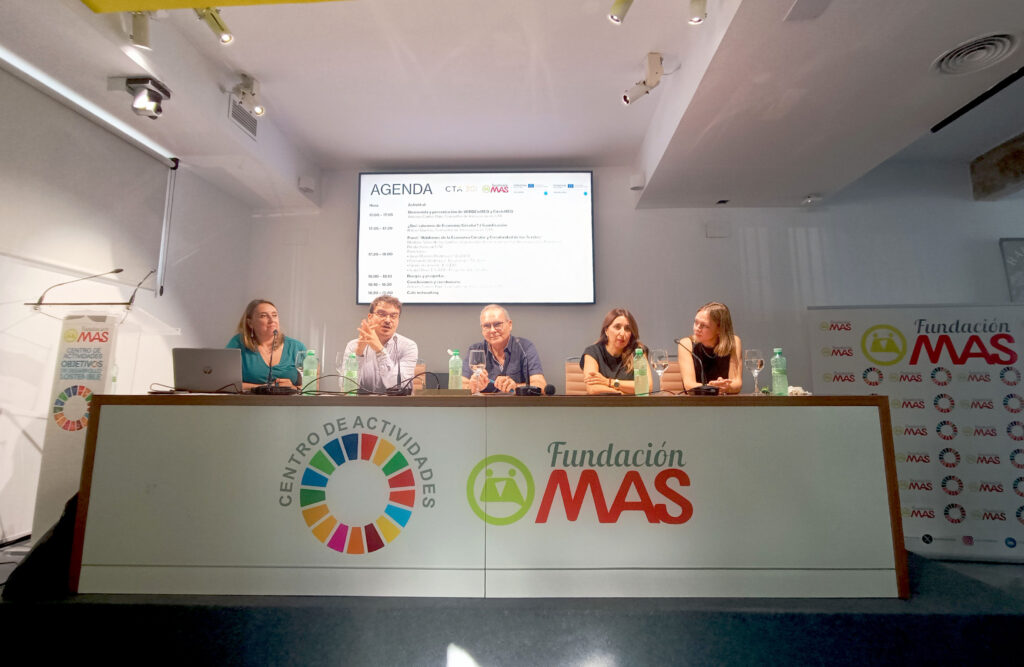
On 8 October, the Andalusian Technology Corporation (CTA) brought together more than 100 fashion students for a talk and workshop held at the Sustainable Development Goals Activity Centre in Seville, headquarters of the MAS Foundation.
Entitled ‘Future Living Lab: Weaving the circular economy’, the meeting, organised within the framework of the European projects VERDEinMED and CircleMED, of which CTA is a partner, aimed to inform and raise awareness about circularity in Andalusia, with a special focus on the textile sector.
The event was attended by the educational communities of the Pablo Picasso Secondary School and the ESSDM Higher Artistic Design Centre, centres that offer degrees related to clothing manufacture, pattern making and fashion design, among other disciplines.
The round table, moderated by Silvia de los Santos, technical manager of the Aerospace and Production Processes sector at CTA, was attended by organisations linked to consumption, textile recycling and education, such as the Andalusian Consumers’ Union (UCAUCE), Moda re- and ESSDM itself, which addressed the circular textile economy from different perspectives.

Textile consumption and eco-design
With regard to textile consumption data, Juan Moreno Rodríguez, secretary general of UCAUCE, pointed out that ‘88% of garments are not recycled, which has a significant environmental impact. It is important that society does not remain passive in the face of this phenomenon, as consumers have the power to choose more sustainable garments and promote responsible habits, starting with the prevention of mass consumption’.
Fernando Rodríguez, vice-president of Moda re-, a non-profit cooperative promoted by Cáritas, dedicated to social integration and textile recycling, with more than 170 second-hand shops and 9,000 collection containers throughout Spain, also spoke. Rodríguez stated that ‘the process of collection, sorting and reuse is costly, and we need to continue working harder to give garments a second life, choosing to reduce our consumption or divert it to second-chance spaces run by social economy organisations.’
Regarding the role of sustainability in the fashion education system, Gloria de Vicente, academic coordinator at ESSDM, and Isabel Díaz, project manager at the same school, explained that “at fashion schools, we teach students the concept of eco-design, which involves creating a garment with recycling in mind once it is discarded. Future fashion designers and producers must take responsibility and be aware of their role within a circular system.”
In addition to students, the meeting organised by CTA was attended by textile recycling companies, non-governmental organisations, fashion designers and other stakeholders interested in the subject. The event also included a collaborative game section, in which attendees were able to test their knowledge and perceptions of sustainability and responsible consumption.
Projects focusing on the Mediterranean
The European projects VERDEinMED and CircleMED, funded by the Interreg Euro-MED programme, work to promote sustainability and the circular economy in the Mediterranean region. VERDEinMED focuses on the textile and clothing sector, promoting the exchange of knowledge, good practices and collaboration between its 10 partners and 15 associated entities, with the aim of reducing the sector’s environmental impact and stimulating innovation.
For its part, CircleMED is developing a tool to assess the effectiveness of different circular economy initiatives in the Mediterranean area, with the aim of classifying them and proposing improvements to enhance their impact.

